Every day in America, thirteen people die waiting for a kidney transplant. Another ten are removed from the waiting list because they became too sick to qualify for the surgery, and every fourteen minutes a new patient is added to the list. Of more than 121,000 people waiting for organ transplants in the U.S., more than 100,000 are waiting for a kidney. Yearly, fewer than 17,000 people receive one.
Landmark graduate Amy Waterman, Associate Professor of Medicine at UCLA, is committed to ending the shortage of kidney donors, and she appears to be on the verge of making a transformational difference. Her extensive research has told her that not only are people ignorant about the disease itself and its treatments, but clueless about the profound, life-transforming effects organ donation can provide to both recipients and donors.
While studying for her Ph.D., Dr. Waterman conducted research to find out if people who had donated a kidney regretted having done it. “Not only did people not regret it,” she said, “95% said they would do it again. Most of them said it was one of the most profound experiences of their life. They were so humbled and so at peace.”
Kidney disease is the gradual loss of kidney function. As the kidneys lose their ability to filter waste from the body, the victim’s general health and quality of life decline, often leading to end-stage kidney failure, which is fatal without artificial filtering (dialysis) or a kidney transplant.
Dialysis is one of the most expensive drains on America’s health care expenses, costing Medicare more than $34 billion a year, more than the entire budget of the National Institutes of Health. After five years on dialysis, only 40% of patients are alive, while a patient who has received a kidney from a living donor will live 15 to 20 years, or from a deceased donor, 10 to 15 years.
“Dialysis is a waste of resources,” Waterman said. “If living donors would donate, it would be an incredible saving to taxpayers.”
Asking for an organ donation is difficult. Waterman said, “The patient is not feeling well, dealing with dialysis and stress, and has to make the conversation public about needing a transplant. Are they going to become their own cheerleader? It’s very hard to ask.”
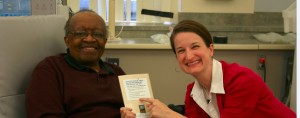 Potential donors react negatively even before learning about the process. “I have found the family usually doesn’t understand what kidney disease is, that they could help, and what it is to be a living donor,” Waterman said. “Even educated people seem afraid. So the patient brings it up indirectly, the family is afraid, then there’s no open dialog, so the patient is on dialysis for years.”
Potential donors react negatively even before learning about the process. “I have found the family usually doesn’t understand what kidney disease is, that they could help, and what it is to be a living donor,” Waterman said. “Even educated people seem afraid. So the patient brings it up indirectly, the family is afraid, then there’s no open dialog, so the patient is on dialysis for years.”
“Last year, after waiting seven to ten years for a donor, 8,000 patients had to be removed from the list, either because they became too sick to be eligible for transplant surgery or they died,” she said. “So 100,000 people are going to dialysis, waiting for years, and next year, 8,000 of them will run out of time. And then more people will be added to the list. So, people around the country are working on how to get the word out to family, to friends, and to the larger community.”
Waterman’s 1997 graduate-school study revealed that although the donation experience had been profound, one thing had been missing for the donors: more information about what being a living donor was going to entail. Waterman set out to provide that information, as well as education for kidney patients. She found that few people were able to actually listen. In her work as Director of UCLA’s Division of Nephrology Transplant Research and Education Center, Waterman has been searching for a way to open people’s minds so they’ll actually hear what’s possible.
In 2010, Waterman founded a nonprofit corporation, Explore Transplant, to address the issue and was disappointed by the results. “Only the most educated and most advantaged are being helped,” she said.
Funding from a kidney patient allowed Waterman to visit the TED2016 Dream Conference in Vancouver in February. Out of conversations with hundreds of attendees, it occurred to her to transform people’s listening by presenting the life-altering, human-spirit aspect of kidney transplants first, so people would then be open to listening to the particulars.
“Hence, the Living Donor Storytelling Project,” she said.
“We would call out to donors and recipients to tell their stories. We’re doing a pilot on how to visually and simply present these stories so the donors, the patients, and the life that’s possible can all be honored.”
“When talking about kidney donation, people’s response is defensive. I see that’s just the first part of their journey. What’s on the other side of that is a decade of additional life – a father who can have the energy to pick up his daughter and spin her around. It’s being there for a high school graduation. It’s a person who can eat, drink, and travel more freely. It is an extraordinary life in comparison to being sick. An extraordinary, normal life, which then ripples out to the family and the larger community.”
When Waterman participated in the Landmark Advanced Course in 1995, she declared, “Who I am is everybody is loved, celebrated, and living an extraordinary life.” She says her work gives her the perfect place to be that contribution.
“I can give patients a more-than-extraordinary life, seven to fourteen years of additional life, and I can give donors an opportunity to be loving,” she said. “I get to stand in this space of seeing people be extraordinarily kind to one another, witnessing the power of shared humanity, and bringing that to a wider community. I’m clear that I’m alive and living it, and that I need help.”
She says the help she needs includes partners, funding, media resources, exposure, and, of course, kidney donors and recipients who want to share their stories.
She contends the donor shortage should be easy to solve. “There are 318 million people in the United States, and we need just 100 thousand of them who are healthy and would go through a surgery that would have them in the hospital for three days or less, then a week at home recovering and a month to be at full capacity again. Would they do that? If they did, people would be able to live decades longer and contribute to their families, and we’d save taxpayers millions and millions of dollars,” she said.
Waterman sees a possibility that her story-telling project could radiate further and transform our culture. “Nowadays, people seem to be getting so selfish and fearful,” she said. “I want to create an army of light. All the people who are selfish, who are into excluding people – I mean, if you give a kidney to someone, it’s the most intimate thing. You know what? Kidneys are pink, no matter what race or color you are. Transplant is an instrument for what’s possible.
“This is what Landmark is about, and this project will be a place where people can go and be reminded that we are all extraordinary for one another.
“What I love about Landmark is they ask, are you willing to do what it takes. I say you can have all of me if this will happen.”
Dr. Waterman has just been invited to speak at an organ transplant summit hosted by the White House later this year.
If you want to offer support to the Living Donor Storytelling Project or share your story of donating or receiving a kidney, you may contact Dr. Amy Waterman at [email protected] or (310) 206-6527.
You can access Explore Transplant at www.exploretransplant.org.
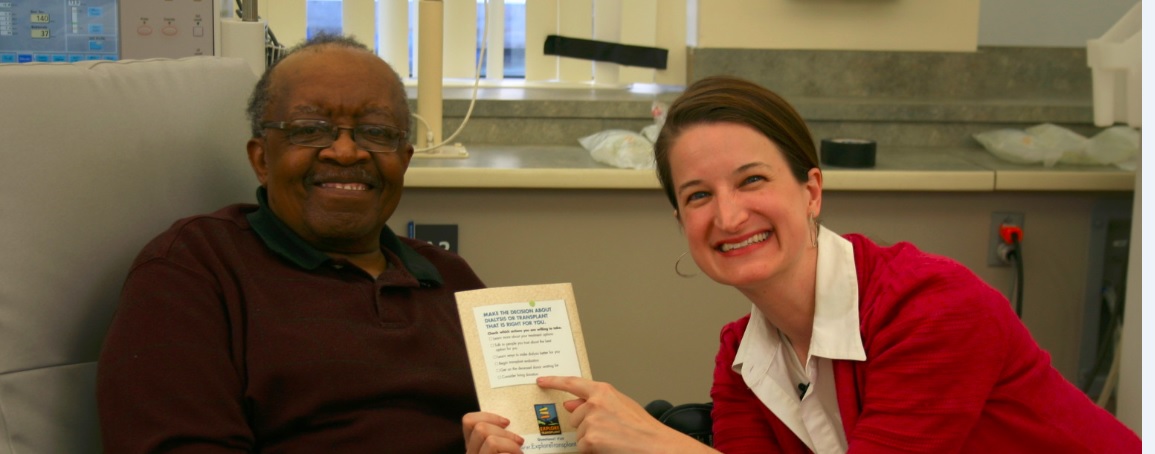
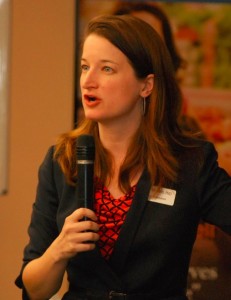
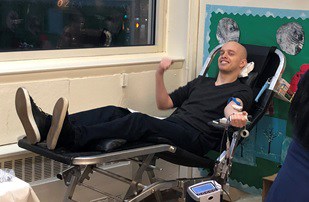
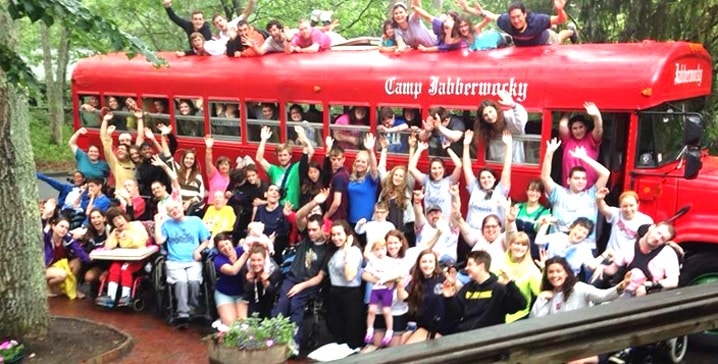
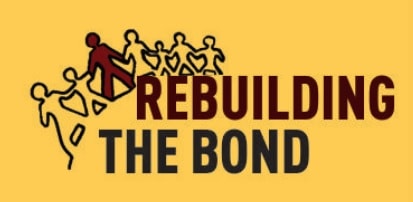
1 comment
Landmark Forum is one of the most empowering courses! It makes our mind powerful and then the graduates engage in great projects. It is so selfless and satisfying to make a positive change around the world. Landmark is the first step to self-happiness. I have done the forum too and since the past 7 years, I have recommended this course to multiple people. Many of my friends, colleagues, employees and cousins and worked to create a difference. I too have made many contributions to the society. I was very young when my dad lost both of his legs in a car accident since then I was pressurized to take care of the family. I got into the business and was living my dad’s life at the age of 20. I did not really have a chance to discover myself and hence felt extremely suffocated. I lost my calm very easily and was not in good terms with anyone, not even myself. It is hard to explain but I took pills to sleep daily and one fine day the doctors recommended a therapist to me. She tried hard too but a year later she gave up. I ended up into believing that this is how I am going to feel all my life. A few years later my parents expired and my brothers got settled and had a life of their own but I was all alone. For a few months, the loneliness affected my sleep and I started off with the therapy again. My brother then took me to the Landmarks introductory course. At first, I thought it was just waste of time but he sat with me throughout the night and signed me up. After around 4 months, I took up charity projects and finally found myself back! I am soo happy and satisfied in life now! Thanks a ton Landmark.